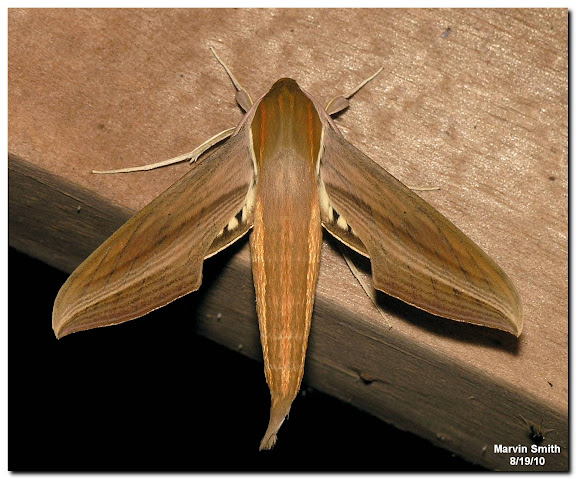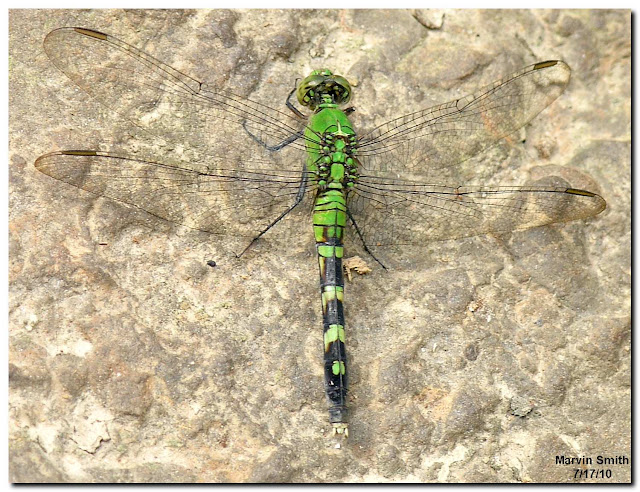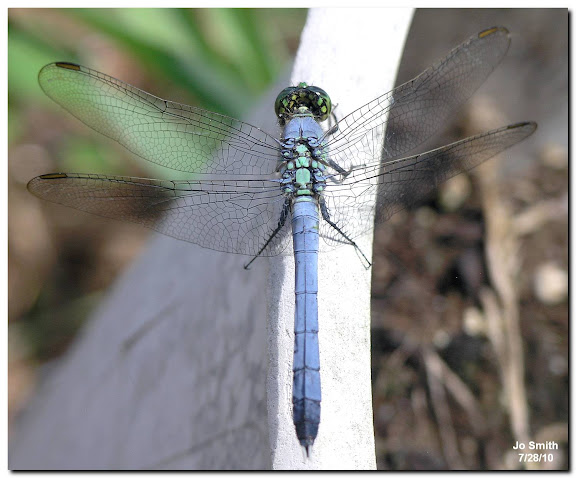 |
| Adult Tersa Sphinx moths have a pointed abdomen (though this one is a little bent) and contrasting black markings on hindwings. |
Tersa Sphinx (Xylophanes tersa)
One of my favorite moths because they look so streamlined and sleek.
Range: Massachusetts south to south Florida; west to Nebraska, New Mexico, and southern Arizona; south through Mexico, the West Indies, and Central America to Argentina.
Food: Adults take nectar from deep-throated flowers. They begin feeding around sunset. I often see them feeding in our Datura right after the blooms have opened in the evening.
Caterpillar host plants include smooth buttonplant (Spermacoce glabra), starclusters (Pentas species), Borreria, Catalpa, and Manettia species.
Range: Massachusetts south to south Florida; west to Nebraska, New Mexico, and southern Arizona; south through Mexico, the West Indies, and Central America to Argentina.
Food: Adults take nectar from deep-throated flowers. They begin feeding around sunset. I often see them feeding in our Datura right after the blooms have opened in the evening.
Caterpillar host plants include smooth buttonplant (Spermacoce glabra), starclusters (Pentas species), Borreria, Catalpa, and Manettia species.
 |
| Tersa Sphinx caterpillars occur in both green and brown forms. This is a fairly early instar and only about 3/4" long. |
.Tersa Sphinx caterpillars have one large eyespot and six smaller eyespots in a line down their sides. In earlier instars, smaller eyespots are barely visible and striping more pronounced.
Sources:
.







